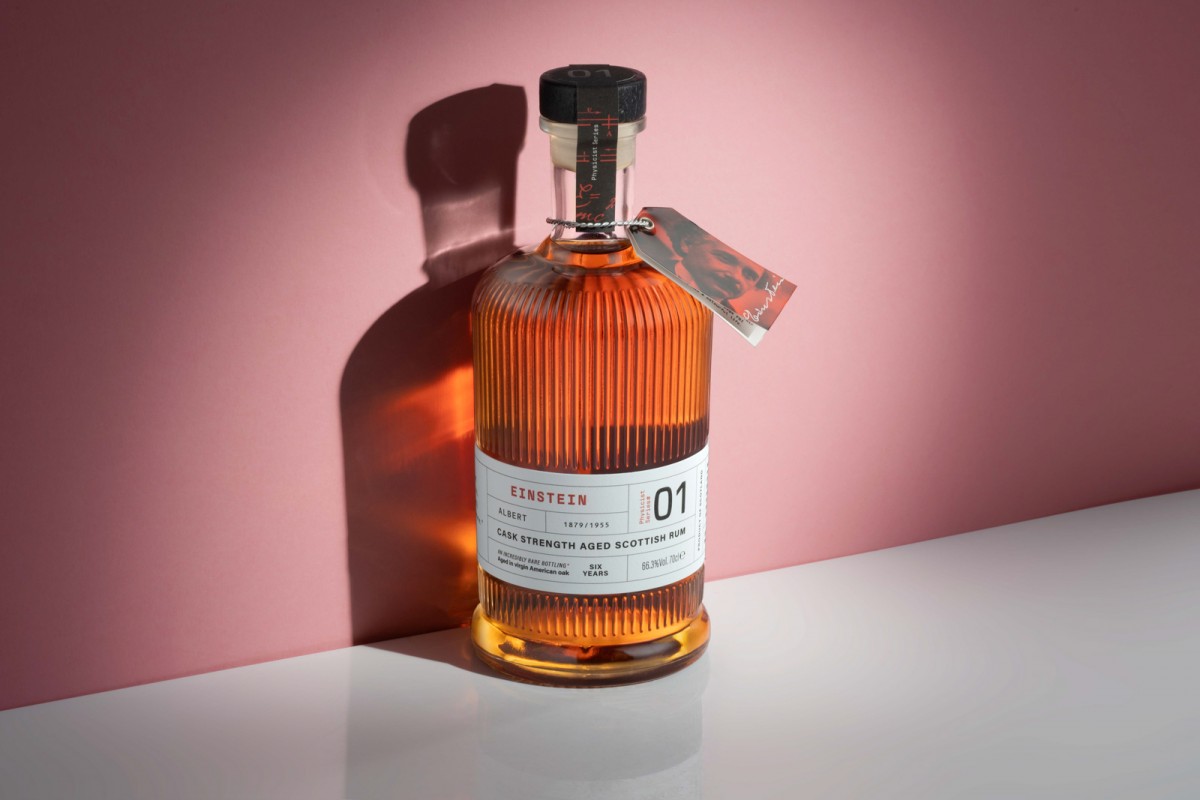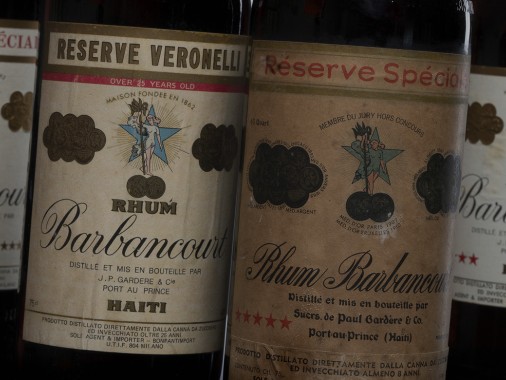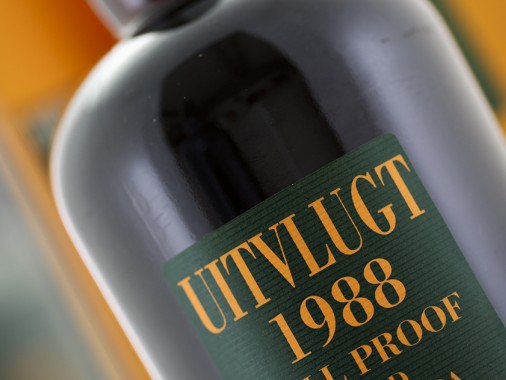 A Gift from the Angels: Can Alcohol Proof Increase During Maturation?
A Gift from the Angels: Can Alcohol Proof Increase During Maturation? In our November Auction, we are delighted to present the inaugural cask aged rum from Scotland-based Dark Matter Distillers. There is a lot to be fascinated by with their product (check out our interview with co-founder Jim Ewen which explains their unique pasteurisation process pre-fermentation), but what intrigued us the most was the ABV – registering in at 66.3%. Other than an impressive natural strength, what had us double-take was the original cask filling strength of 63.5%. An anomaly in the world of rum (and aging spirits in Scotland), we thought we would shed a light on how environmental differences affect strength changes during maturation – including an increase in ABV!
Before we get into this rare phenomenon, let’s go back to basics and answer: what is the Angel’s Share?
Most aged rum is matured in wooden barrels and during this vital process, is subject to a percentage of evaporation. This is because of the natural porousness of the wood where the spirit spends its days in slumber. Both alcohol and water evaporate through the wood's pores and disappear into the atmosphere. In the whisky industry, it has long been considered a small sacrifice to the heavens, which is why it has been coined the Angel’s Share. According to The Duppy Share brand, in the Caribbean, these rum-loving spirits are called Duppies and swoop between the island distilleries stealing the best of rum as its aging in old oak barrels.
But that’s not the full story. Due to the differences in molecular size – ethanol (alcohol) and water evaporate at different rates from the cask. Sometimes the concentration of alcohol actually increases in the cask. So what happens when the angel’s leave us a gift by increasing our alcohol %? and why does this happen?
The two most important factors at play in warehouses around the world in the variation of evaporative losses are temperature and humidity. When temperatures climb, this increases the evaporation of both alcohol and water, while humidity impacts the rate at which alcohol and water are lost (Whisky: Technology, Production and Marketing, 2003). When alcohol proof increases during maturation it is chiefly humidity driven. Low humidity results in water evaporating faster than alcohol – raising the strength of the spirit. This is universally the case in the Scotch whisky industry, where the cool, humid conditions create a natural propensity to the loss of alcohol over water, therefore decreasing alcohol strength during maturation.

Foursquare distillery is one of the most prestigious in the Caribbean. On average, they lose 6 - 7% from their casks each year. Photography: Rum Auctioneer
In traditional rum producing countries such as those in the Caribbean, although benefiting from glorious temperatures which increases evaporation, their tropical climes and high humidity environment means that the phenomenon of alcohol proof increasing during maturation is rarely witnessed, as explained by Richard Seale, owner and distiller of the prestigious Foursquare distillery:
“It is not something that happens in our climate here in Barbados, but is something that generally relates to humidity - it has to be low enough to favour drawing more water than alcohol - but it will be combination of both temperature and humidity. At Foursquare, we lose around 6 – 7% a year”
Richard Seale, Foursquare

The Antique Collection from Buffalo Trace distillery in Kentucky. Buffalo Trace regularly witness alcohol proof increase during maturation. Photography: Whisky Auctioneer
In drier climates, water can evaporate at a faster rate than alcohol, resulting in an increase in alcohol proof over the time in which spirit has been maturing in cask. The Buffalo Trace distillery in Kentucky is well known for this. Buffalo Trace is one of America's most historic distilleries and home to the one of the largest families of homegrown brands in any industry. Due to their climate, alcohol proof regularly increases during maturation of their bourbons, including the George T. Stagg release which makes up part of their highly anticipated Antique Collection. I asked Harlen Wheatley, Master Distiller at Buffalo Trace, to tell us a bit more about this curiosity...
"The behavior is totally dependent on the environment, whether it be the design of the rickhouse, or the location. Yes, we typically see alcohol proof increasing on the majority of our barrels. We are lucky to have a huge variety of environments and it allows us to offer a good variety of whiskies."
"It's absolutely critical in the whiskey development as it interacts with the wood during the environmental swings. There has to be a balance of the extract rate as it ages in the barrel. Too fast may give too much astringency and too slow might not develop the whiskey."
Harlen Wheatley, Buffalo Trace
As Harlen has alluded, it is very unlikely that alcohol proof is changed in isolation of other changes and that these conditions will impart other characteristics and changes to the final spirit.
In Scotland, the average humidity levels sit around 80% ensuring that alcohol always evaporates faster than water, and so every Scotch whisky distiller faces the loss of the Angel’s Share. But how then has Scotland’s first rum distillery broken the cycle and beat the odds?

Dark Matter Distillers is Scotland's first modern rum distillery. In their warehouses, alcohol proof has increased during maturation, bucking the general trend for distilleries in Scotland. Photography: Rum Auctioneer
After speaking with Jim Ewen, co-founder at Dark Matter Distillers, we believe that their heated warehouse conditions have created the perfect conditions for this to occur.
“Our building is supplied with heat from a biomass plant about 100m away. They send hot water to us and then we heat exchange with our internal system and the whole building is supplied like this.
It was actually good economic sense and we decided to keep the warehouse warm in winter as well. To be honest, this is completely accidental with the cask - every day is a school day in rum!”
Jim Ewen, Dark Matter Distillers
At six years of age, if this rum were matured in a typical Scottish warehouse without heated conditions, Dark Matter Distillers would have lost around 14% of its liquid in cask. If it had spent its days evolving in the hot climate of the Caribbean, it would have lost about 40%! For their first cask, Dark Matter Distiller's very own guardian angels have increased the alcohol strength by almost 3%. An invisible but natural phenomena, evaporative changes in maturation are as curious as the mysteries in physics, which just so happens to be the inspiration behind the inaugural 'Physicist Series' from Dark Matter Distillers.






